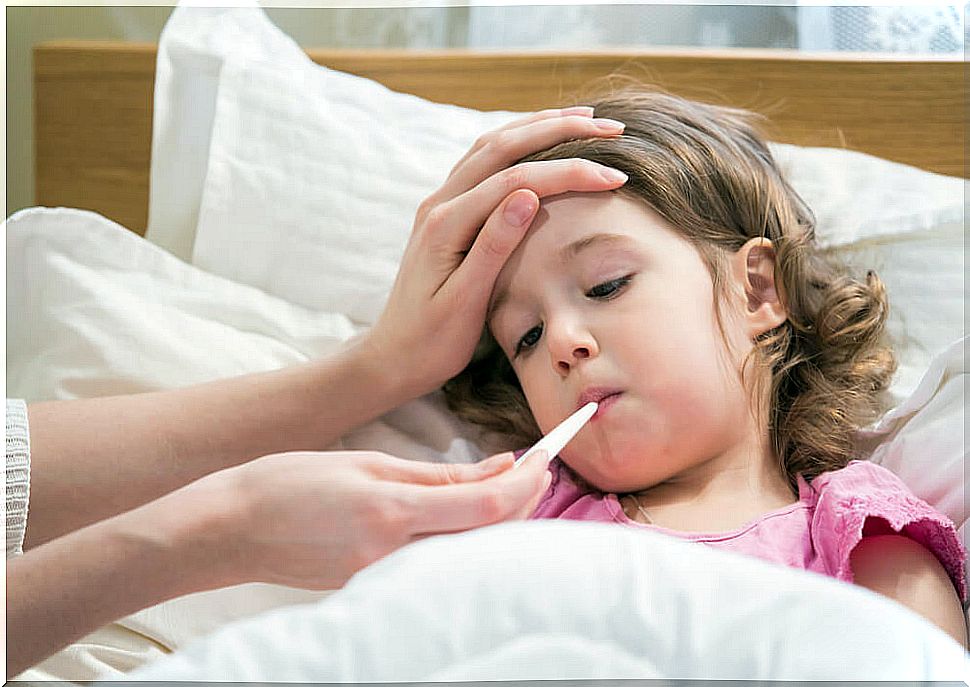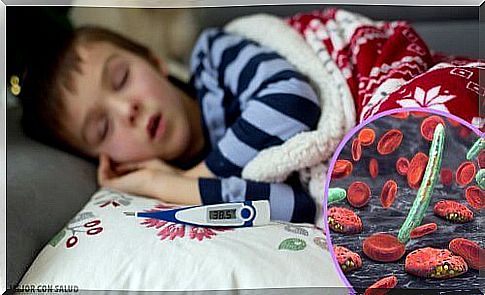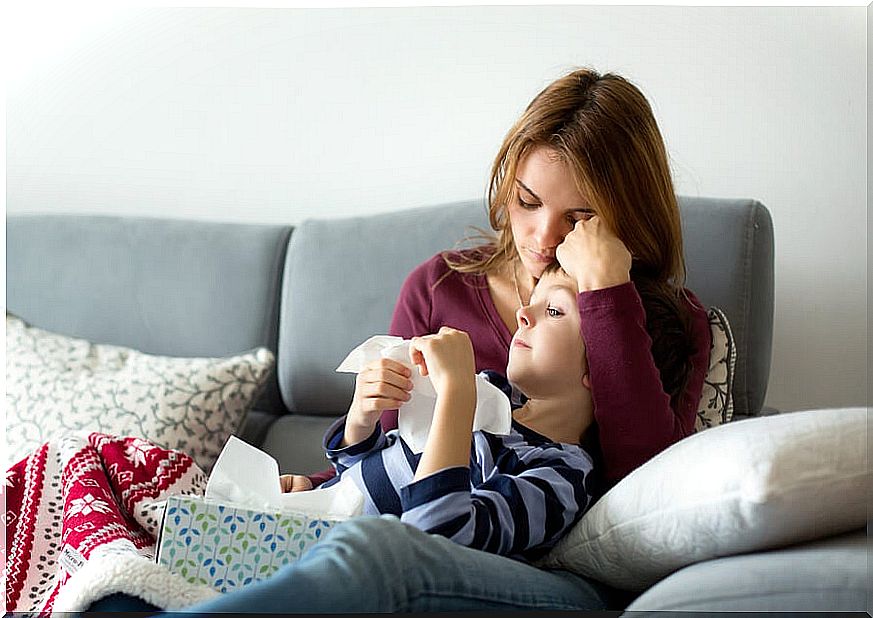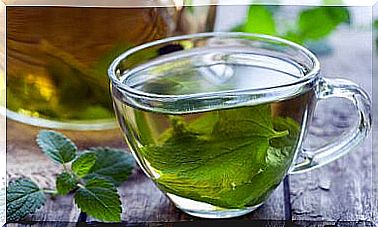10 Myths About Childhood Flu
A child is prone to catching colds five to eight times a year. That is why it will always be necessary to protect it from both germs, as well as the myths and beliefs that surround childhood flu.

Did you know that a child is prone to colds 5 to 8 times a year? If you add to this that he lives with siblings or is related to other children at school or in other spaces that can frequently infect him, he has a greater chance of suffering from childhood flu.
It will always be necessary to protect your child from germs to avoid congestion, sneezing and discomfort. The classroom or playground of kindergartens and schools, dining rooms or even school transport, become a breeding ground for contagion.
But to take the precautions that are necessary for the children in the family to be healthy, it is necessary to clarify the scientific myths that surround the childhood flu. Especially which ones are true and which ones are not.
Childhood flu can be different
Not all children have the same symptoms as adults. In older children and adolescents, it can be very similar to the flu in adults. You have a fever, cough, nasal congestion, sore throat, and in some cases, vomiting or diarrhea.
For younger children, the flu may be less obvious. Symptoms such as unexplained fever, drowsiness, or, in most children, loss of appetite appear.
1. The flu leads to other infections

Certain! The flu virus greatly alters the child’s defense barrier and can facilitate the spread of other infections by other viruses and bacteria. The reverse can also happen. Children who have an illness caused by another virus are more susceptible to getting the flu, since their immune barrier is weaker.
2. All children should get a flu shot
Fake! Universal vaccination in children is not recommended. Only in cases where they suffer from chronic diseases such as asthma, diabetes or heart disease can it be indicated to avoid complications caused by childhood flu.
Children who live with the elderly who suffer from these chronic diseases should also be vaccinated, as this population is more susceptible to influenza infections. However, you must be well informed about these vaccines because they are generally for a specific type of virus, so immunization is not complete.
3. If we vaccinate the child, he will not get the flu
Fake! It is a mistake to believe that because the child is vaccinated the flu will no longer be contagious. Generally, the vaccines protect against the subtypes H1N1, H3N2 and Influenzavirus B.
Vaccines only cover 70-80% of existing flu viruses each season. So being vaccinated does not mean that the child cannot get another type of flu.
4. Children are more immune to the flu if they have already had it
Certain! The flu is a disease that creates immunity. “Living” with the flu helps us prevent future infections. When a child becomes infected with some type of flu virus after passing the episode of fevers and the discomfort that it produces, he becomes immune to that specific virus. Your immune barrier to other flu viruses will also be strengthened.
The human body creates an immune memory that develops with each virus that we have to suffer. The same thing happens with children, your body will be prepared to fight the viruses that have infected it. This mechanism is especially effective with the first flu infection that we have suffered in life.
5. Avoid dairy if you have the flu
Fake! Dairy products do not cause more phlegm. They should only be avoided if the child suffers from a problem directly related to dairy, such as lactose intolerance or food allergies.
There is no direct relationship between phlegm and dairy, so you can rest assured when ordering your bottle or bottle. If the child has a lot of phlegm, you should consult your pediatrician to help you alleviate this annoying symptom.
6. High temperatures weaken viruses

Fake! When the change of season comes and the temperatures begin to rise, there is the false belief that the childhood flu begins to decrease. Due to the great variability and adaptability of influenza viruses, it is not ruled out that they can adapt to new climatic conditions.
With childhood flu, the best thing to do is not to lower your guard against the viruses that can affect our children. Not even in countries or regions with especially hot climates.
7. Antibiotics fight the flu
Since the flu is caused by a virus, antibiotics are not effective. Its treatment is very simple: it uses only medicines to lower fever and relieve general discomfort. You can also try highly effective home remedies to ease discomfort and speed up the recovery process.
In treating childhood flu, hydration is the most important thing. We must ensure that the child consumes liquid frequently. Juices will help us a lot to keep it hydrated. Of course, they also need to rest.
8. Washing your hands prevents the risk of contagion
Certain! In both adults and children, it is the most important measure to prevent respiratory infections. If we put this simple hygienic measure into practice, we reduce the risk of contagion by a large percentage.
There are more than 200 viruses that cause colds and flu, and the hands are their main transmitter. It is a simple routine that children must learn well and apply it at all times of the year.
They must be taught to always wash their hands with soap and water. If it is liquid soap it is better because it makes it easier to spread throughout the hand. One hand should rotate over the other and backward until it lather enough.
Then you have to rub one hand against the other, the tips of the fingers, between the fingers, the big toes and the wrists of both hands. Finally, you must use enough water to remove the soap well and dry it well, without forgetting to dry between your fingers.
9. The flu “poorly cured” affect later

Fake! The alleged consequences of a badly cured flu is a sentence that has no scientific basis. The flu is virus infection that must be missed. There is no antibiotic to cure the flu, there are only drugs or natural remedies that help relieve symptoms.
The flu is not badly cured, or the symptoms pass or are complicated by poor care, but there are no “remains of the flu” in the body that can generate some type of subsequent consequence.
Childhood flu can lead to other illnesses if the necessary precautions are not taken. The most common illness caused by the flu is otitis. There may be other more complicated ones such as pneumonia, although it is very rare, but it will depend on the virus that infected the child and how his health was before the infection.
10.- You have to bundle up so that they “sweat” the flu
Fake! This is another dangerous belief. If the child has a fever and you wrap him excessively or overdress him, the only thing you will achieve is to raise his body temperature more. It is important not to overcoat him and take the necessary precautions to keep fever at bay.
Final Recommendations
There is no cure for childhood flu. Basically, you have to alleviate the discomfort of the child, make sure they rest and drink plenty of fluids. The use of antibiotics, antimucolytics or cough suppressants are contraindicated unless you have an express instruction from the pediatrician.
A good diet will always be the key to keeping your child healthy. There are foods that strengthen your immune system, which will take care of defending the body from the attack of flu viruses.
We have to teach children to cover their mouth or nose, coughing or sneezing to prevent the spread of the virus. If your child does not show daily signs of improvement or has not improved after a week, do not hesitate, it is time to speak with the pediatrician.









